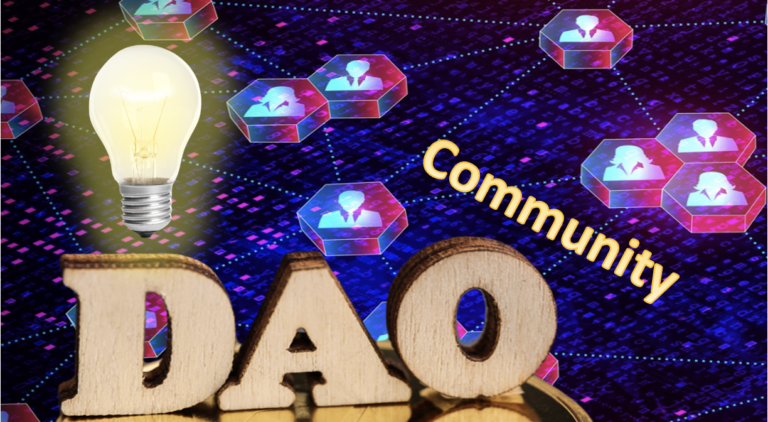When a major technology shift is underway, the change often happens gradually, undetectably. The transition from Internet 1.0 to Internet 2.0 illuminates how easily technology can catch us unaware. Right now, another tectonic shift is taking place through crypto—and it is bound to change all of our lives.
The internet has been exciting since inception—even in its nascent form of Internet 1.0, which includes downloading pictures, receiving e-mails, using search engines, etc. And those basic forms of digital exchange slowly morphed into videos, blogs, and vlogs—the streaming of our favorite movies, and interconnected devices beyond just our smartphones. Now, our lights, thermostats, door locks, etc. can now be controlled through web. And just when we are becoming accustomed to these new features (the Internet 2.0), cryptocurrency is turning the internet on its head once again.
 Enter Internet 3.0, where crypto can solve the issues plaguing our current internet, such as security, privacy, and the centralization of power to corporations that now control cyberspace.
Enter Internet 3.0, where crypto can solve the issues plaguing our current internet, such as security, privacy, and the centralization of power to corporations that now control cyberspace.
In the 1980s, the Cypherpunks conceived an internet run on cryptography, where privacy and security could be maintained. They dreamed up a peer-to-peer system of sharing information, devoid of a central middleman, or a troll under the bridge profiting off our basic right to communicate. The cypherpunks were not only cryptographers, they were essentially futurists with a social concern for how internet technology would be deployed in our lives. But even in the eighties the internet still wasn’t mainstream. Even the web was technically invented with the ARPANET back in 1969, it wasn’t until 1983 when the movie Wargames hit the big screen that pop culture got its first taste by way of modems: “Shall we play a game”. These devices for exchanging data would look primitive to younger generations now using the internet.
At that time, people still didn’t refer to the network as the internet per se. This came later when e-mail, the first browsers, and gateway services such as America Online brought the web to the masses in the nineties.
Then peer-to-peer exchanges through file sharing software like Napster sounded the alarm bells over digital property. And companies like Google stepped onto the stage and began to look at your online habits and clicks as more valuable than any amount of money they could charge for a service. In essence, we became the product of the internet. And the cypherpunks’ dream of a peer-to-peer network was dismantled.
The dawning of the Internet 3.0 began with the Bitcoin whitepaper by Satoshi Nakamoto. By way of Bitcoin, cryptocurrency was introduced to the world as the first means of exchanging value digitally, securely, and with pseudonymity. Upon first hearing about cryptocurrency, we assume it’s a new form of digital money, but is so much more.
With the Internet 1.0, our data was housed primarily in databases owned by individuals, website hosting services, colleges, and some corporations. With the Internet 2.0, our data is primarily not only housed on data servers owned by corporations, but also in cloud services such as AWS that provide data analytic services, which enable companies to scan our internet usage and profit off our keystrokes, points, clicks, recorded geolocations, and even our voices. In both instances of the Internet 1.0 and 2.0, the data is centralized—owned and controlled by third-party entities that operate these services.
Though Bitcoin’s best use case is transacting or storing digital money, the true breakthrough was the blockchain, whereby Bitcoin established a way of storing information in such a way that it is not central to any one power or entity. Bitcoin was the seedling for Internet 3.0 and transformation of the entire internet that is now underway. With the layer 2 solutions like the lightning network, the crypto information highway has been paved for future development on the Bitcoin network.
Instead of having our data housed and stored on central servers, through the blockchain—all data can be held in a highly secure fashion on a database that belongs to the people, designed for the people, and governed by the people. By way of smart contracts, computation could also take place through cryptocurrency—in fact, all computing as we know can take place on a decentralized public blockchain that is highly secure, private, and with no third-party collecting a fee along the way.
By way of the Internet 3.0, we can take back the Internet. It goes far beyond just banks, brokerage services, and the like no longer being able to collect fees on our transactions. The gatekeepers of the internet are up for disruption, as cryptographically stored data on a public blockchain will prove to be more secure, efficient, and private. Our digital profiles will again be our own, rather than housed and sold off by technocrats profiting off our digital habits. With the Internet 3.0, we can reclaim our digital sovereignty—our rights to our own digital selves, property, and privacy.
References and Further Reading
A History Of The Internet And Its Invention – All That’s Interesting
Bitcoin: A Peer-to-Peer Electronic Cash System – Satoshi Nakamoto






